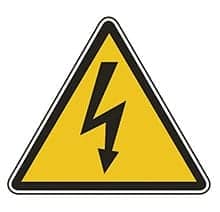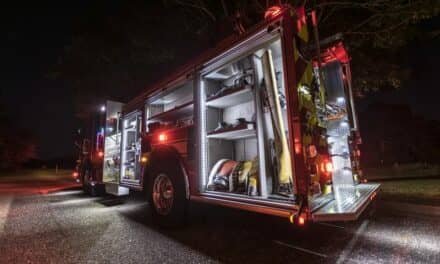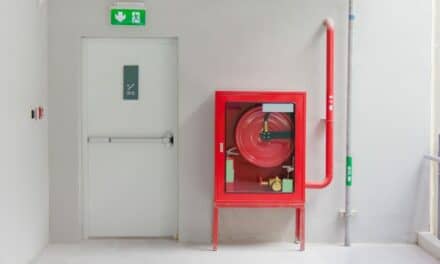 |
Everyone who works in the world of medical equipment maintenance should know that safety is one of the primary missions of their job. The biggest area of concern is electrical safety, but safety also encompasses the realms of fire and biological safety, to name a few. Several organizations have set safety standards that must be followed, such as the Association for the Advancement of Medical Instrumentation (AAMI), the International Electrotechnical Commission (IEC), The Joint Commission, NFPA, and the Occupational Safety & Health Administration (OSHA). So how does one prepare for certification in the realm of safety with so many organizations attempting to set standards you must follow? If I had to choose one publication to study for the safety portion of the certification exam it would be AAMI’s Electrical Safety Manual by Matthew F. Baretich, PE, PhD, CCE; and Marvin Shepherd, PE, FACCE. This publication does a wonderful job of bringing in many resources to give a complete overview of electrical safety in health care environments.
In the day-to-day duties of a BMET, electrical safety is a primary concern and testing limits should be known before attempting to become certified. Some of the most basic electrical safety tests are as follows.
Basic Electrical Safety
Ground wire resistance should be kept as low as possible, but the limit is .5 ohms for all patient care equipment located within the patient care vicinity, as opposed to the patient care area—know the difference.
Case leakage should also be kept at a minimum, but 300 microamps (uA) is the limit for new equipment. However, 500 uA can be accepted for pre-existing medical equipment and some specialized equipment such as a portable x-ray machine. When 500 uA is acceptable, it is prudent to modify PM schedules to check grounding systems more frequently. These testing limits vary from some recommendations, but the limits quoted here are from NFPA 99 and appear most frequently on the ICC exam.
Patient connections must also be tested for leakage current. These patient connections are usually ECG lead wires. Patient lead leakage must be limited to 100 uA for nonisolated inputs and 10 and 50 uA for isolated inputs—most ECG inputs are isolated. The limit of 10 uA is for each lead to ground under normal polarity with ground intact, and 50 uA is for lead leakage to ground with normal polarity with the ground open. Leads must also be tested for leakage currents between each lead. The standard for lead to lead leakage current testing is still 10 and 50 uA. These tests are now required only during incoming inspection and after repair that may have compromised these safety limits. None of the above safety testing limits need to be tested in reverse polarity as long as the facility has an appropriate maintenance schedule for facility power outlets.
The other test that has to be performed on patient connections is the lead isolation test. The limit for this safety test is 50 uA for each input with normal polarity, power on and off, and ground intact. This test is conducted only on isolated inputs and is required only during incoming inspection. This test always brings up questions for students who are astute enough to notice we are testing for isolation (which is like resistance), but the measurement is in amperage or current. This is because the testing applies line voltage to the leads and measures the current. Ohm’s law tells us that with a known voltage and known current, we can find the amount of resistance, or in this case the amount of isolation provided for the patient’s protection. If the current is low enough, the resistance or isolation must be high.
As mentioned, reverse polarity testing of equipment does not need to be performed if the facility has an acceptable PM program for hospital power outlets. If the power outlet is hospital grade (green dot), the receptacle must be tested after installation and after any renovation that may compromise the outlet. If the receptacle is not hospital grade, the facility must establish acceptable testing intervals. When testing the power receptacle the facility must check the physical integrity, the continuity of the grounding circuit, the correct polarity of the hot and neutral connections, and the retention force of the grounding blade. The retention force must be no less than 4 ounces of tension.
Wet Locations
The exam may also have questions on the other power outlet that refers to areas deemed a wet location. Know the definition of wet locations, which must have a ground fault circuit interrupter power receptacle installed, better known as GFCIs. GFCIs are not allowed in areas where power interruption could harm the patient, such as the OR. GFCIs must meet the standards of a regular outlet in the facility, but these power outlets monitor ground faults and remove power from the outlet when a ground fault current exceeds 6 milliamps. This removal of the power from the receptacle is why GFCIs are not allowed in areas that may be utilizing life support equipment.
Where isolated power systems are used in the facility they must employ a line isolation monitor (LIM). The LIM must have visual alarms, a red light to indicate a fault, a green light to indicate isolation is present, and an audible alarm. LIMs must go into alarm condition—visual and audible—when a threshold current of 5 milliamps is reached.
Fire and Pathogens
While on the subject of safety, fire and bloodborne pathogens safety will likely be seen on the exam. Let’s begin with bloodborne pathogens safety. I know everyone working in health care has attended an OSHA bloodborne pathogens workshop. As you learned in the workshop, all bodily fluids are to be considered infected with HIV and hepatitis. Questions on the exam may be centered on personal protection equipment (PPE). PPE in the health care environment includes gloves to protect hands; gowns or aprons to protect skin and clothing; masks or respirators to protect the mouth and nose, and possibly the respiratory tract, from airborne infections; goggles to protect the eyes; and a face shield for protection from the splatter of liquids.
OSHA issues safety and workplace health guidelines regarding PPE, and all employers must furnish appropriate PPE for all employees. OSHA specifies circumstances in which protective equipment is indicated, but the Centers for Disease Control and Prevention (CDC) recommends when, what, and how to use PPE. For more information on PPE visit the CDC Web site (www.cdc.gov/ncidod/dhqp/ppe.html).
Fire safety questions that may appear on the exam concern the classes of fire extinguishers and what type of fire each class is designed to extinguish. Class A is designed for paper, wood, and some plastics. Class B extinguishers are designed to extinguish fires from combustible liquids such as gasoline, kerosene, grease, and oil. Class C extinguishes electrical fires from wiring and appliances, and uses nonconductive agents to extinguish the fire. Commonly found in chemical laboratories, Class D extinguishers quench fires of combustible metals such as magnesium, titanium, etc. Today, most all fire extinguishers found in public facilities are combination fire extinguishers designated A, B, and C and can be used on all types of fires.
John Noblitt, BS, CBET, is the BMET program director at Caldwell Community College and Technical Institute, Hudson, NC. For more information, contact .
Review Questions
- How much tension is required on a ground plug in a health care facility?
- 4 lbs
- 6 oz
- 4 mA
- 115 g
- At what current level does a GFCI remove power from the outlet?
- 5 A
- 5 mA
- 6 mA
- 2 mA
- The maximum allowable case leakage for new medical equipment is____.
- 300 mA
- 300 uA
- 500 mA
- Less than 2 uA
- Lead isolation is measured in ____.
- Ohms
- mhos
- Volts
- Amperage
See the answer
See the answer
See the answer
See the answer




